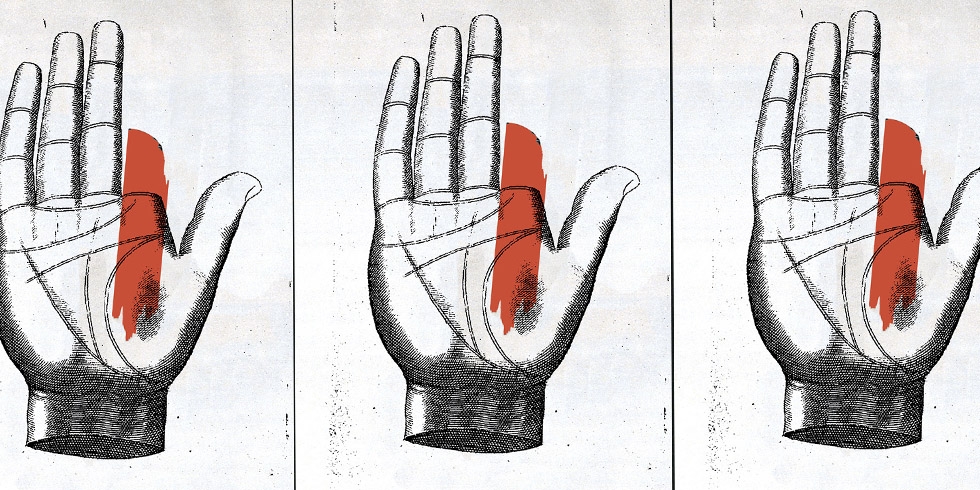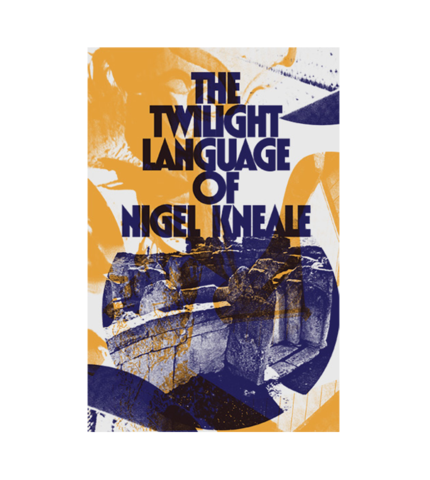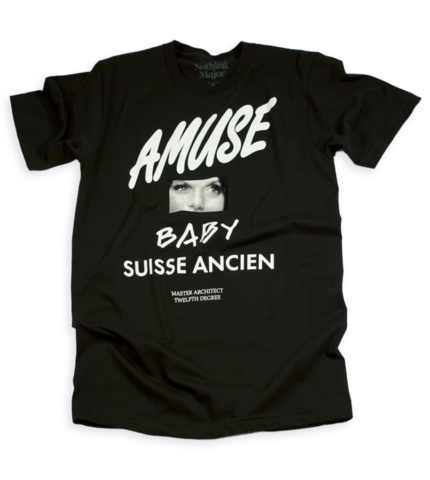Jay Shaw of Kingdom of Nonsense
The Colorado-based poster designer talks his recent Divine Fits collaboration, the industry of the film poster, and why 20th Century Polish designers had it right.
Last month, two black and white Divine Fits posters caught our eye. The poster set was part of the deluxe vinyl packaging for the supergroup's new single, and although they were independent thematically, both featured a bold graphic centerpiece, or as the designer Jay Shaw (sometimes known as "Iron Jaiden") would later tell us, "one central crazy-looking thing to get the point across."
That crazy image at the center of much of Shaw's work is actually an essential part of his favorite era of poster design, early 20th century work from Eastern Europe, and is a common feature of his design work for the Criterion Collection, Mondo, Third Man Records, and a long list of bands and film studios.
We caught up with Shaw, who runs the Kingdom of Nonsense design studio from his home in Colorado, to talk about the industry of film packaging, collaborating with bands, and the plague of the "floating heads" film poster.
 Can you tell me about the Divine Fits posters? How did that collaboration come about?
Can you tell me about the Divine Fits posters? How did that collaboration come about?
Yeah. Dan [Boeckner] and Britt [Daniel] got in touch and they wanted to do a poster for their new single. I had actually worked with them a little bit on the album cover for the first album. We didn’t end up using the stuff I came up with, but I guess they liked some of the things I had in mind. They asked if I’d be interested, I said I’d love to, and they sent along an awesome list of images they were in love with, and they fell into my camp, which is old early 20th century Eastern European posters. They said, "Go to town, do whatever you want and we’ll see what comes up. Hopefully it’s good." Luckily I came up with six posters and they liked all of them, so they chose their two favorites. Very easy job in terms of the client. The work wasn’t all that easy. The client was really awesome.
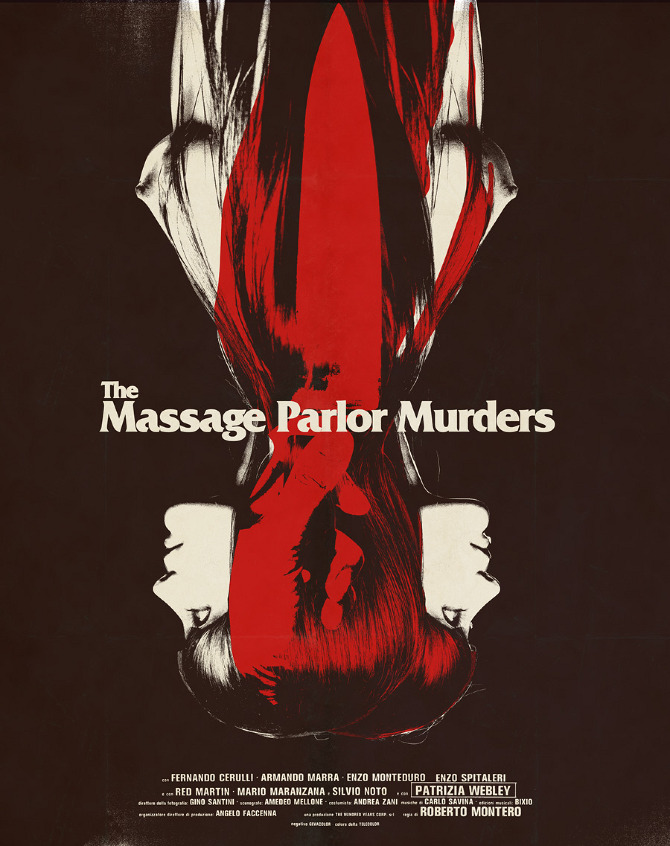 When I first saw the posters, they weren’t in the context of your work. Once I saw them on your site I realized how cinematic they were.
When I first saw the posters, they weren’t in the context of your work. Once I saw them on your site I realized how cinematic they were.
Yeah for the last couple of years I’ve been ripping off mid-century Polish design in everything I do. Just because it’s my favorite school of art. I think it’s beautiful. It’s starting to make a bit of a comeback, people are starting to dig things up and look at them and say, “Wow, these are pretty awesome posters.” The guys in Divine Fits are into the same stuff. I think they’re more into the Russian Constructivist period of poster design, which is similar. It’s got the same sort of aesthetic: really dark, bold imagery, not a lot of background noise. One central crazy-looking thing to get the point across. When we approached the project, they all wanted something cinematic. They all wanted it to look like a movie poster. Without actually being a movie poster.
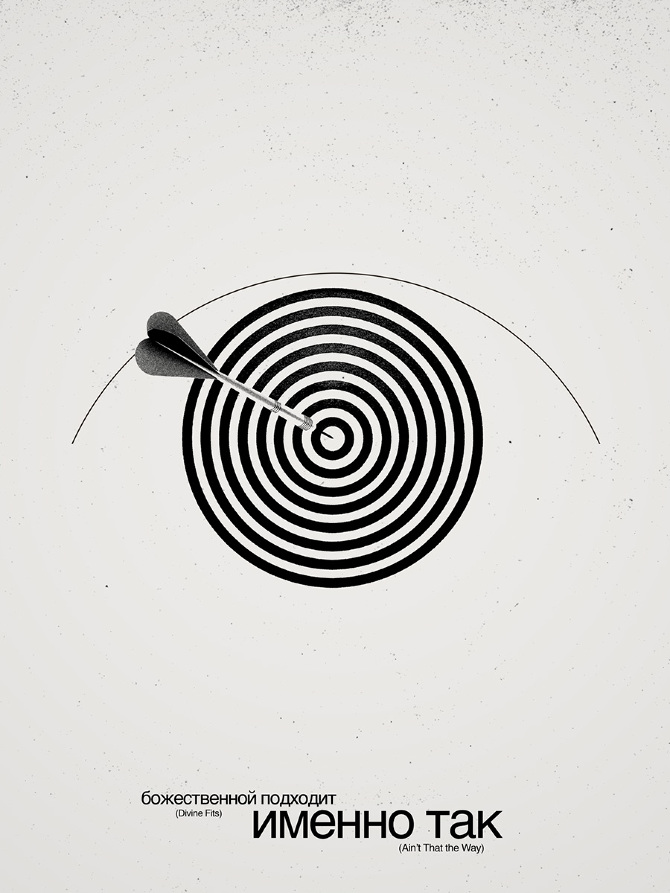 How is working with a music client like Divine Fits or Third Man Records different from a film project?
How is working with a music client like Divine Fits or Third Man Records different from a film project?
In those two examples, they would be really close to film projects. The guys in Divine Fits are really in touch with that school of poster design, so they’re not looking at it like a gig poster, which most bands would be. They’re looking at it like it’s a film poster. Most of the work I do for Third Man is for their Light and Sound Machine, where they dig up wonderful obscure films and they play them at the Belcourt Theatre in Nashville. I do movie posters for them.
The biggest difference between doing a movie poster for a studio, and doing a gig poster for a band? I would say it’s actually tough to do stuff for bands. With a movie poster you are constrained a bit. You’re limited to what you can express. You have a very clear narrative. You’ve already got visuals attached to the film. You can’t stray too far from that. You’re kind of creating a piece of advertising for the film. Even if it’s for something that came out 20 years ago, the poster still needs to be an advertisement for the movie. So you’ve got some rails to bounce off of. With bands a lot of times, they’ll be like, “Oh, just do your thing. Have fun.” And you have no idea what they like or what they hate. A lot of times I’ll turn in stuff to a band and they’ll say, “Oh that’s just weird and scary and why would you do that? That’s nothing like our music. That’s terrible, what an awful poster.” I go, “Oh sorry, let’s try something else. I’ll take some of the penises out and we’ll see what we can come up with.” It can be pretty tough. Then you get bands that really want to get involved in the artistic process. Which if they’re good at it, like Divine Fits, it’s fun, it’s awesome. Unfortunately a lot of times they’re not. So they’ll jump and be like, “Hey! What if we did a purple skull?” It’s like, “Oh Jesus, no.” I mean there are all types of challenges, and I’m not complaining. It’s the coolest job in the world, but definitely there’s a lot more room for interpretation with bands artistically. It can be challenging, especially for a weirdo like me. I don’t do a lot of conventional imagery, so when bands ask for a poster it’s not going to be a bird flying out of a tree or things like that. I’m going to do something strange.
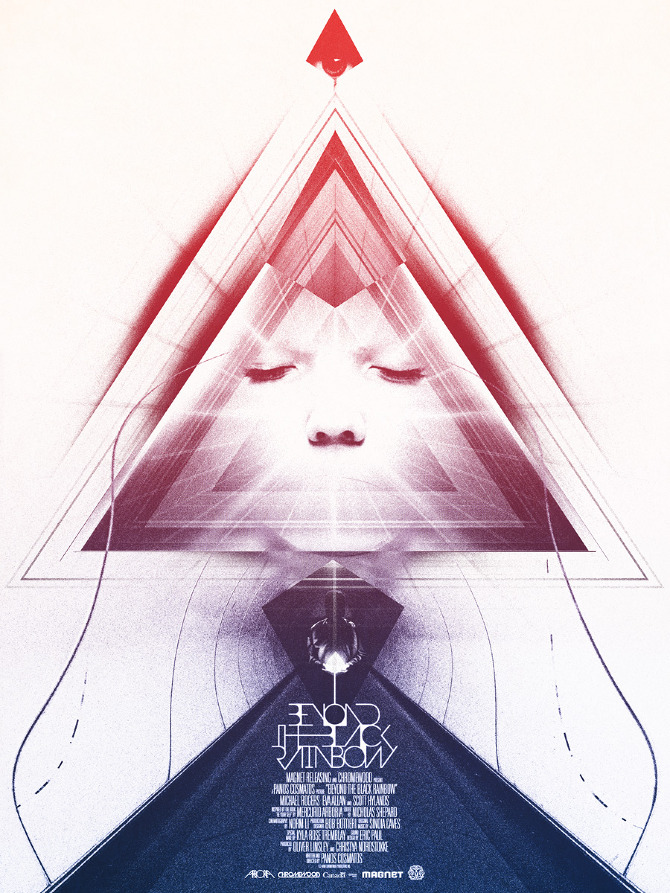
How about a new release versus a reissue? I noticed for your Repo Man poster you used some of the original typeface.
Oh for Repo Man? Yeah we used the original typeface. I paused the movie and took a photo of it. I’m not really technologically savvy, so I took a photo of the television instead of taking a screenshot. I paused the movie, took a photo and redrew it.
They’re completely different animals. For an older film you’re playing to people’s memory of the movie. You’re playing to their nostalgic attachment. Whereas for a new film, no one’s seen it yet. You need to create something that’s going to pull people in, “What is this? I want to watch this.” I mean there are a few people who haven’t seen Repo Man, but I wasn’t making that cover for them. That was definitely for people who have already seen Repo Man, so when they walk by it they go, “Oh yeah I remember that movie.” There are no actors in it. You wouldn’t know who’s in the movie if you just looked at my cover. But a lot of times with new movies, the studios, the directors, anyone involved, they do want to feature some of the selling points of the film. I did a poster for Killing Them Softly, the Brad Pitt film. The studio, they were adamant about having the actors featured in the poster, which is something I don’t tend to do a lot. They said, “You know, look, Brad Pitt is in this, James Gandolfini is in this, Ray Liotta is in this, we need to have them very prominently featured on the poster.” Naturally I would avoid that. I’d show an American flag dripping in blood and be done with it. They really wanted to see actors. 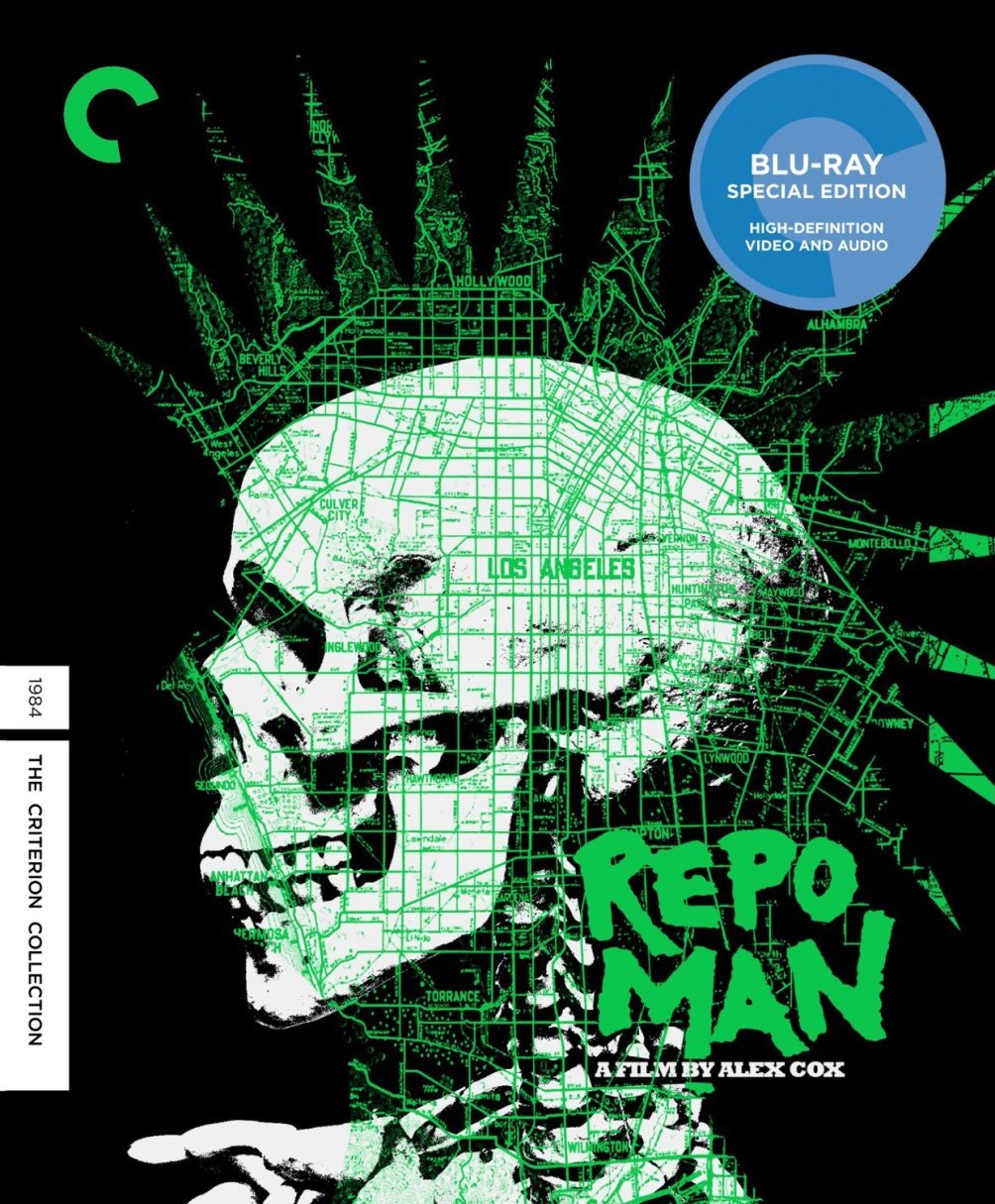
Now when you watch a film, do you involuntarily start thinking about how you would design the poster?
No, no, god, not at all. This is what I do for work. It’s like if you work at a grocery store when you go shopping, you wouldn’t think, “Gosh, I’d stock the shelves this way.” You want to avoid that. You want to force that out of your head. On the rare occasion that I get to watch a movie that’s not for work, I actively fight the urge to think about posters or anything else. I love my job, but you have to divorce yourself from it somewhere. I took my kids to see the new Despicable Me movie yesterday and I actually did catch myself thinking, “What if Mondo did a poster for this? Who would we put on it? What would I do? Dude, just stop and enjoy the movie.” It gets hard to enjoy films from a pure spectator perspective when you’re constantly thinking, how would I solve this problem?
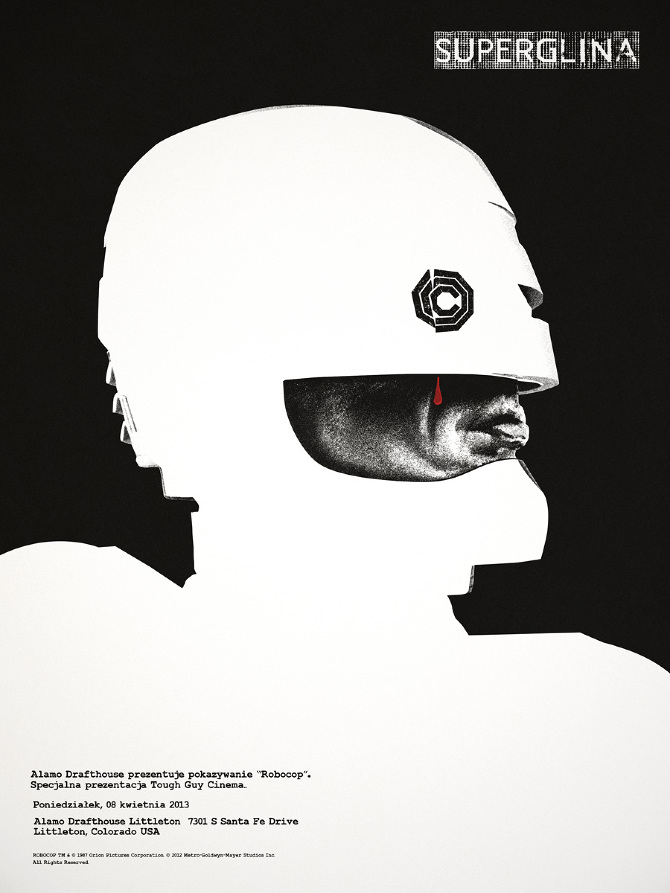 Sometimes it helps. I did a RoboCop poster and no one asked me to. I was just watching RoboCop. I had an idea, and came downstairs put it together, sent it to Mondo and they were like, “This is great, we’ll put it out!” But they didn’t ask me, they didn’t assign me RoboCop. I wasn’t even sure they had a license for it. Sometimes that works.
Sometimes it helps. I did a RoboCop poster and no one asked me to. I was just watching RoboCop. I had an idea, and came downstairs put it together, sent it to Mondo and they were like, “This is great, we’ll put it out!” But they didn’t ask me, they didn’t assign me RoboCop. I wasn’t even sure they had a license for it. Sometimes that works.
I’m always curious about projects that never get to see the light of day. Ideas that you really loved, but maybe got shot down by a studio or something like that.
Oh god. So many. You have no idea, that happens all the time. Especially with dudes like me. Not every poster artist has the same story, a guy like Tyler Stout he’s got a lot less in his rejected pile than I do. Like I said before, the stuff I do, I really try to push as far away from conventional as I can. And then the studio or whoever’s in charge of the project tends to reel me back a little bit. I’ve got tons of stuff. Some of it I don’t want to say in case that will “jeopardize future projects,” but I’ve had some really wonderful directors that I absolutely respect and look up to my whole life look at a poster I did for their film and go, “Oh my god. This is insane. This is not going to work, take this guy off the project." Those pieces are just sitting in a file somewhere that will never see the light of day.
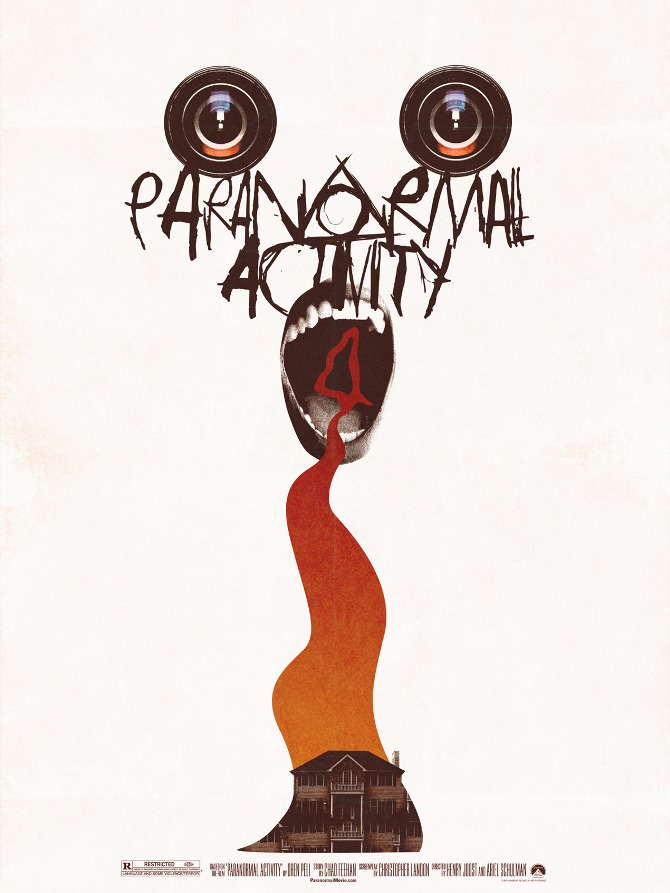 They’re in the archives for now.
They’re in the archives for now.
Yeah for now and probably forever. Sometimes these projects have a really limited lifespan. I probably have a good dozen or so posters that may or may not come out. Some are for really big films, some are for really tiny films.
Oh really?
That’s what ends up happening. It’s an interesting part of this: when something comes out, that’s not the newest thing that anybody’s been working on obviously. There’s this gestation period that has to happen after the poster is created, and goes through all the channels it’s got to go through before it can finally come out. A lot of times the poster will come out and I don’t even remember that I did it. And I’ll go, “Hey! Shit, I didn’t remember I did that. That looks terrible, that was eight months ago. I wish I could change it now.” How many poster artists do studios have working on one film? Six or seven?
How many poster artists do studios have working on one film? Six or seven?
If it’s for a new film they’ll hire five or six different artists to all work on the same film at the same time. Unbeknownst to [us]. We don’t know we’re working together. And then they’ll decide by committee which direction they like the best. A lot of the studios, they have budgets to burn. We’re all fairly cheap compared to the budget of a big film. What do they care if they’re paying ten artists? It’s nothing. They’ll pay ten artists full fees, and we’re sitting around like, “Oh geez I’m working on this big film,” and then the poster never comes out. And then the movie comes out, and you see the poster from someone else, and you’re like, “What? I didn’t know anyone else was working on this.” It turns out there were a dozen other artists doing something at the same time. Which makes sense. They’re hedging their bets.
The things I do for a band like Divine Fits or a company like Mondo, they’re not going to waste resources. They’re not going to hire ten different people for one project. They’ll pick somebody and work the project through. On a smaller project it’s just me. Some of the larger ones I’ve bumped into people I know and they’re like, “I’m working on this movie,” and I’m like, “Me too! Good luck to you.” 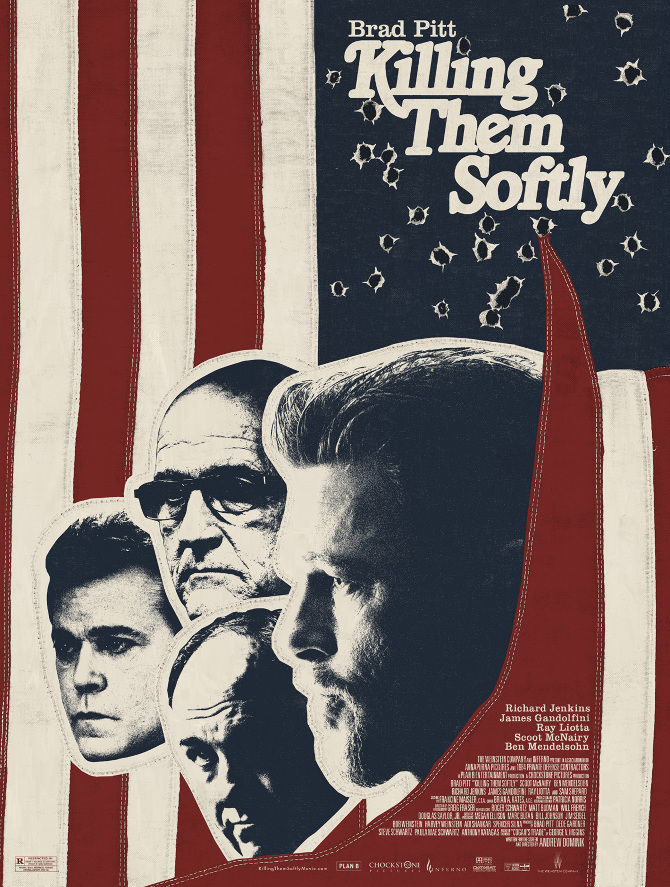 What trends do you wish weren’t happening in poster design right now?
What trends do you wish weren’t happening in poster design right now?
I think any poster artist right now wishes there was more art in movie posters. It’s moved away from really beautiful, gorgeous—when you think about the '60s, '70s, even '80s, in film poster art you had people like Boris Vallejo and Saul Bass creating gorgeous pieces of film art, and those would be used as the primary advertising for a film. Studios have realized that it’s easier, it’s quicker, and it’s cheaper to paste a bunch of floating heads on a poster. You’ll get the same audience draw and you don’t have to worry about it. A lot of people talk about there being a bit of a resurgence in film poster art. There might be. I’m pretty pessimistic about that. If studios were ever going to go back to the way it used to be, guys like me are going out of business. They’re not going to hire me to do it, they’ll just pay some intern. Or not pay some intern. I’m not sure what will happen. Just like with music, the saving grace of everything is the accessibility of people making independent productions. Anyone can start a band, put out an album, and get something really cool going. Same goes with movies. There are more independent films now than there ever have been. The equipment’s cheaper, it’s easier to distribute. That’s a lot of the work that I do that I love the most. When an independent filmmaker comes to me and says, “Hey, listen we just wrapped. We had a budget of $5,000, and we’d like to get a poster for it.” That type of stuff I hope is going to flourish. In that arena there will be some really great things. It’s hard to tell what the big studios are thinking. One year you’ll see two or three great films come out. Like Kathryn Bigelow comes out with a new movie that will make one billion dollars and win awards, and you think, "Okay, they’re finally getting it." And then the next year they dump all this money into Grown Ups 2. “What the hell? Are you serious? Last year, remember all the good movies made money?” I have no idea what they’re ever thinking. It might be floating heads on posters forever, they may get back to painted stuff. I think at some point it’s probably going to be frames with trailers playing inside. Why bother with the art?
